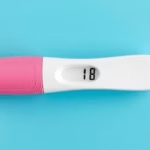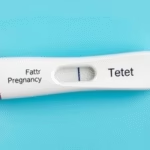Understanding Implantation Bleeding BFP
In our discussion today, we will be talking about implantation bleeding BFP. This term refers to a potential early sign of pregnancy. It occurs when a fertilized egg attaches itself to the lining of the uterus, which can cause minor bleeding or spotting. Many women may experience this and often mistake it for their regular menstrual period. However, implantation bleeding is usually lighter in color and flow. Understanding this phenomenon is crucial for those trying to conceive or those who suspect they might be pregnant. It is essential to discern between regular menstrual bleeding and implantation bleeding as this can be an early indicator of pregnancy.
Implantation bleeding is often accompanied by other early pregnancy symptoms such as cramping and changes in mood. Many women look for confirmation of pregnancy through various methods. A “BFP” (big fat positive) refers to a positive pregnancy test result, an exciting moment for many. It signifies that the hormone hCG (human chorionic gonadotropin) is present in the body, which is crucial for sustaining pregnancy. Recognizing the signs of implantation bleeding and understanding its implications can provide insight into early pregnancy stages.
What Causes Implantation Bleeding?
Implantation bleeding occurs due to the process of the fertilized egg burrowing into the uterine lining. This action can cause small blood vessels to rupture, resulting in minimal bleeding or spotting. The timing of implantation typically happens around 6 to 12 days after conception. For many women, this event may coincide with when they would expect their menstrual period, leading to confusion. Some key points to consider include:
- Timing: Usually occurs a week before the expected period.
- Color: Often light pink or brown, unlike menstrual blood, which is typically bright red.
- Flow: Usually lighter and shorter in duration compared to a regular period.
Understanding what causes implantation bleeding can help in distinguishing it from other types of bleeding. If you experience unusual bleeding, it is always best to consult a healthcare provider for a comprehensive evaluation and guidance.
Recognizing the Signs of Implantation Bleeding
Recognizing the signs of implantation bleeding can help you assess whether you may be pregnant. The key indicators include:
- Light spotting: Unlike a regular period, the bleeding from implantation is usually very light.
- Timing: It typically happens about a week before your expected period.
- Cramps: Mild cramping may accompany spotting.
- Change in discharge: You may notice a change of color or texture in your cervical mucus.
Being aware of these symptoms can help you monitor your body better and can provide insights into potential pregnancy. Tracking your cycle and understanding your body can be critical in early pregnancy detection.
The Relationship Between Implantation Bleeding and Positive Pregnancy Tests
The relationship between implantation bleeding and a positive pregnancy test is significant. Once implantation occurs, the body starts to produce the hCG hormone, which is detected by pregnancy tests. Typically, a pregnancy test can show a positive result about a week after implantation bleeding occurs. Here is how the process works:
- Implantation: The fertilized egg attaches to the uterine wall.
- hCG Production: The placenta begins to form and release hCG into the bloodstream.
- Pregnancy Testing: Once adequate levels of hCG are present, urine or blood tests can detect the hormone, resulting in a positive pregnancy test.
For best results, it’s advised to wait a few days after implantation bleeding before taking a pregnancy test to ensure more accurate results. Women should understand that testing too early might lead to false negatives.
Common Myths About Implantation Bleeding
There are various myths surrounding implantation bleeding, which can lead to confusion. Some common misconceptions include:
- It’s the same as a period: Implantation bleeding is much lighter and shorter than a typical menstrual period.
- It’s a sign of a miscarriage: This is not true; implantation bleeding is a normal sign of pregnancy.
- All women experience it: Many women may not notice implantation bleeding at all.
Recognizing these myths is essential for individuals trying to conceive and can help to clarify any confusion regarding early pregnancy signs.
How to Prepare for a Pregnancy Test After Implantation Bleeding
After experiencing implantation bleeding, knowing how to prepare for a pregnancy test can improve your accuracy. Here are some practical steps:
- Timing: Wait for at least a week after the bleeding before taking a test for the most reliable results.
- Use first-morning urine: This urine is usually more concentrated, increasing the likelihood of detecting hCG.
- Follow instructions: Ensure to read and follow the instructions on the pregnancy test for valid results.
Embracing these preparation tips can enhance your testing experience and ensure you receive the best possible information regarding your pregnancy status.
Consulting a Healthcare Provider
If you suspect you’re experiencing implantation bleeding or think you may be pregnant, consulting a healthcare provider is always advisable. They can offer professional guidance. Here’s what to expect:
- A thorough examination: Your healthcare provider may conduct blood tests to confirm pregnancy.
- Assessment of symptoms: They will take note of all your symptoms to rule out any complications.
- Follow-up care: Professional care ensures a healthy pregnancy if you are confirmed pregnant.
Your doctor’s insight is invaluable in understanding your health better and ensuring a safe pregnancy journey.
Final Thoughts
Understanding implantation bleeding and its relationship with a positive pregnancy test is crucial for women trying to conceive. Knowing what to expect can help alleviate confusion and ensure informed decision-making. Implantation bleeding typically occurs about a week before your expected period and is characterized by light spotting, often accompanied by minor cramping. Recognizing the symptoms can be beneficial for early pregnancy detection.
It is also critical to dispel common myths surrounding this phenomenon. For many women, implantation bleeding can occur without notice, and not every woman experiences it visibly. After noticing implantation bleeding, waiting a few days before taking a pregnancy test ensures more accurate results. Once again, preparing for and understanding how a pregnancy test works can facilitate the overall process of confirming pregnancy status.
Your health provider can offer the best guidance if you have any uncertainties or questions. Their expertise will ensure you receive the correct information to promote a healthy pregnancy. Being informed about what implantation bleeding is and its implications can empower you in your pregnancy journey.
Frequently Asked Questions (FAQs)
- What is implantation bleeding? Implantation bleeding is light spotting that may occur when a fertilized egg attaches to the uterine lining, often mistaken for a regular period.
- When does implantation bleeding occur? It usually occurs around 6 to 12 days after conception, approximately a week before the expected period.
- How can I tell the difference between implantation bleeding and a period? Implantation bleeding is lighter in color and flow compared to a regular menstrual period.
- Can I take a pregnancy test right after implantation bleeding? It is best to wait a few days after the bleeding for a more accurate result.
- Is implantation bleeding a sign of miscarriage? No, implantation bleeding is a normal sign of pregnancy and should not be confused with miscarriage.
Further Reading
What Type of Psychotherapy Is Best for Anxiety?







